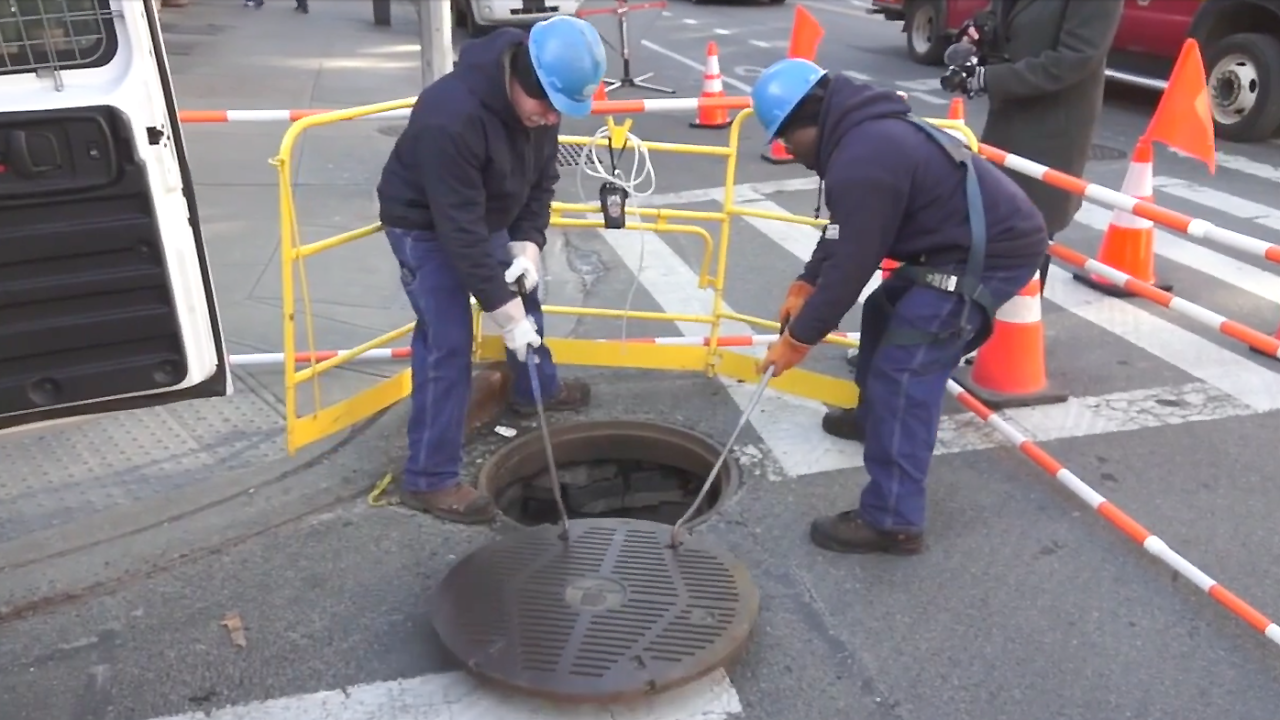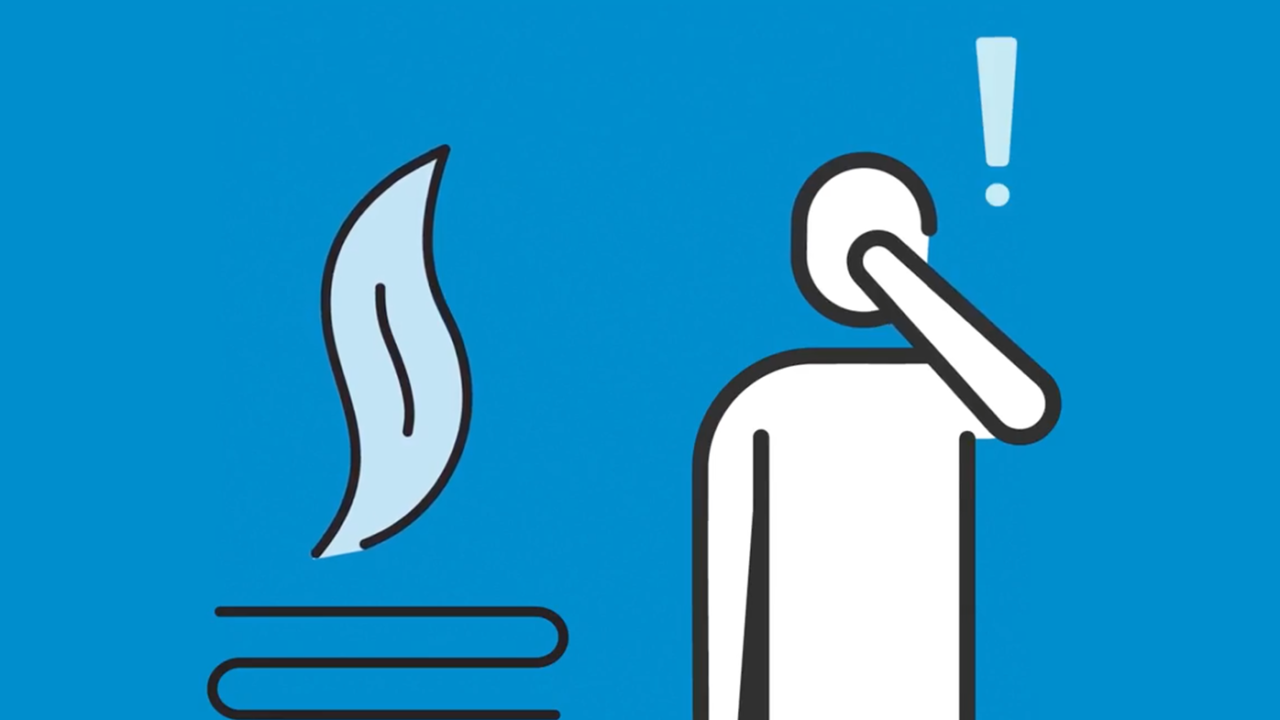
Safety & Environment
Public Safety
We invested more than $3 billion in 2018 to fortify our electric, gas, and steam infrastructure. This investment underscores our commitment to providing energy to millions of customers efficiently and responsibly while protecting the environment and keeping people safe throughout our service area.
Electric
 Con Edison continues to develop tools, techniques, and management strategies to improve safety, troubleshoot problems, and increase efficiency. Distribution Engineering and Electric Operations teams developed thermal imaging for scanning secondary assets in high-activity areas for incipient faults and introduced latched vented manhole covers. These efforts complement previously existing programs including stray voltage detection, cover venting, and underground inspection.
Con Edison continues to develop tools, techniques, and management strategies to improve safety, troubleshoot problems, and increase efficiency. Distribution Engineering and Electric Operations teams developed thermal imaging for scanning secondary assets in high-activity areas for incipient faults and introduced latched vented manhole covers. These efforts complement previously existing programs including stray voltage detection, cover venting, and underground inspection.
Con Edison’s underground networks are surveyed for contact voltage 12 times a year, using mobile detectors. In 2018, we found and eliminated 8,806 cases of contact voltage. Of those, 6,911 cases (78%) were on non-CECONY equipment (streetlights, electric signs, and other structures). We performed more than 16,471 inspections of our underground system (manholes, service boxes, and transformer vaults).
O&R’s electric system testing is completed at least once every five years. In 2018, O&R found and eliminated one case of contact voltage, all on company-owned equipment, and performed 32,377 inspections and 27,913 tests.

Gas
As part of our ongoing effort to reduce our carbon footprint and sharpen our focus on natural gas safety, we worked with the New York State Public Service Commission, New York City, and the Environmental Defense Fund to develop a program to identify and reduce emissions from small volume, non-hazardous leaks of methane gas. This effort is not mandated by regulations. Historically, non-hazardous leaks were prioritized and scheduled for repair based on the availability of resources and other factors such as age of the leak and complexity of the repair. In 2017 and 2018, we focused on reducing the backlog of the non-hazardous leaks by successfully prioritizing and eliminating 140 out of the top 150 gas leaks. We continued to maintain historically low levels of our total leaks through 2018 and reduced the time it takes to repair all of our leaks to historically low levels.
We have significantly increased investments that modernize our gas delivery system, further enhancing public safety and reducing leaks. The investments include accelerating our cast iron and unprotected steel gas main replacement program. In 2018, we replaced 91.7 miles of such mains (the most we’ve ever replaced in one year). We continue to perform monthly gas leak patrols of our entire gas distribution system, and have improved our emergency response procedures by working with the Fire Department of New York as well as coordinating with key city agencies. We are also continuing to work closely with the New York City Department of Buildings to establish requirements and protocols related to gas pipe inspections in buildings and the mandated use of residential methane detectors. In 2018 we launched a pilot program to install 9,000 natural gas detectors in buildings that send a signal to our emergency response center when a leak develops.
Con Edison has a comprehensive, multi-channel and multilingual campaign to educate customers and the public at large — an estimated nine million people across New York City and Westchester County — about gas safety and the urgency of reporting gas leaks. The company reaches customers primarily through direct mailings, youth outreach efforts, advertising, digital initiatives (such as email campaigns, conEd.com and social media), and community events.
We also continued our successful media campaign, Smell Gas, Act Fast, featuring videos and social media posts that inform customers on what to do if they smell gas. The videos are in English, Spanish, Chinese, and Korean.

Steam
We provide steam service to some 3 million people in Manhattan through an underground network of pipes. By generating steam primarily through co-generation, we provide efficient production and reduce emissions that would otherwise be generated by localized boilers and equipment. We focus on identifying ways to lower costs to customers, maintain high reliability, improve resiliency, and protect the environment.
On July 19, 2018, a steam main rupture occurred at the intersection of Fifth Ave. and 21st Street. No serious injuries occurred, though five people were treated for minor first-aid injuries and released at the scene. We immediately enacted our Corporate Emergency Response Plan mobilizing all necessary resources to mitigate the overall impact of the incident to the public, businesses, and all our customers. The cause of the rupture is still under investigation, but we are evaluating what actions can potentially be taken to better prevent such incidents.
Through the remainder of 2018, we continued to strive for safe and efficient operations while meeting our customers’ needs and maintaining focus on continued bill reductions. We concluded the year with an overall system reliability rate of 99.97% and met a peak demand of 7.9 million pounds of steam on January 5, 2018.
